Manesi - Dendra
|
Manesi Manesi is a village belonging to the former municipality of Midea. Its inhabitants, "Manesaioi" were Arvanites who fled there from Nafplio since 1540. Apart from Manesi, Arvanites went to Kekryra, to Zakynthos and Italy. In Italy, in a Venetian document a reference to a family named Manesis were found. The document MANESSIS was written with two "s" (Manessis), like all Arvanitic names with the same ending - Renesis, Matesis (names which are known to Zakynthos). In one play, probably of Cretan Mark Strelitzas-Bathas, which currently is on display at Istituto Ellenico di Venezia (Venice), depicts a soldier, Kominis Manesis and his two sons, John and George. |
||
|
Manessi, as a village rather than a family-name, was first mentioned in the inventory of Grimani (1700s) and by the name "Zevgolatio" where four families lived, based on place Plataniti. The occupation of the region by the Turks led the villagers to flee from the area. Only 19 were the residents of the village in 1829, according to the census that made the French Expeditionary Corps. At the same period, the neighbouring settlement of Dendra appears with 64 residents. The modern history of the village is lost somewhere during the civil war. Many of the residents wish to stop remembering "the strife. The main occupation of the inhabitants was farming and the agriculture (due to lack of large farmland). From 1930 up until a few years ago, tobacco production was the most important and lucrative of the farming village. Now it has been abandoned and the cultivation of citrus fruits has gotten its position, which many of the villagers sold in the street markets. |
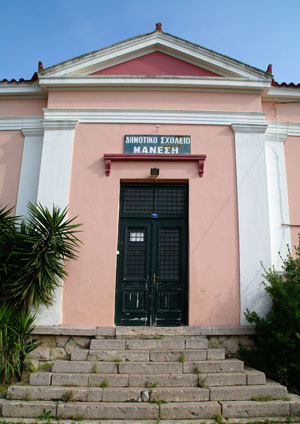 |
|
Manesi, with the settlement Dendra, has 10 churches (Church of St. Constantine, Church of St. Nektarios, Church of Our Lady, Church of Prophet Elias, Church of Visitation, Church of Saints / Manesi) - (Church of St. Thomas, Church of St. Theodoros, Church of St.John, Church of Evangelist / Dendra). The oldest is the chapel of St. Thomas and the Church St.Theodoros which you can find more information in the "Archaeological Sites - Points of Interest". Interesting is also the Church St. Constantine with its unique marble belfry, which was probably built in the late 19th century. |
||
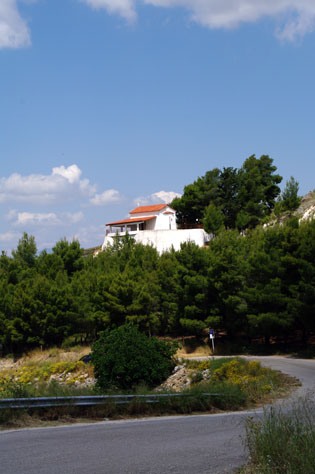  |
||
| Church of St. Thomas Church of St.Theodori |
||
|
A separate personality of the village is the prolific folklorist-customs'writter "G. Karamanos", son of John Karamanos the first photographer in the area. From the early 20th century he worked in the village square, the unique studio of photography of J. Karamanos, which was also the central theme of the series of ERT (National Television-Radio), "the photographer of the village". Apart from anything else, the village is famous for its taverns with traditional flavors. Across all Argolida prefecture, guests can taste Giossa (a special lamp) and Piglet of high quality. Central Square - Church St. Constantine |
||
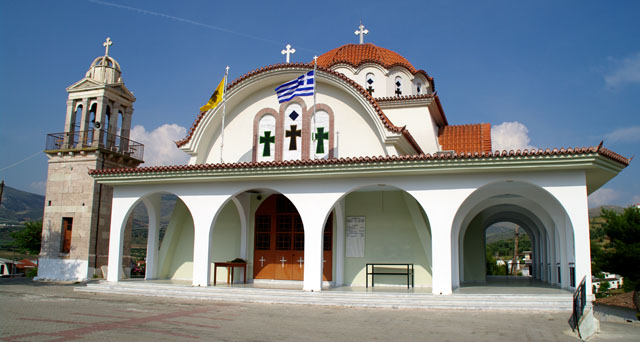 |
||
| Church St. Constantine | ||
|
Dendra Dendra is small but, indeed a village with a rich and long history. Firstly, residents lived at the village (in its current form) according to the testimony in the early 19th century. The approximately 200 residents work in agriculture and few in farming. The population of the village, which belongs to the municipality of Manesi, seems to grow as there are many who prefer the village either to purchase or build their home. This occurs because Dendra are very close to Nafplio (10 km) and Argos (9 km). Furthermore, the highway that connects the village with the aforementioned cities is very secure. Additionally, the settlement is built amphitheatrically at an altitude of about 70 meters, which offers all houses the magnificent view of the whole plain of Argolida. |
||
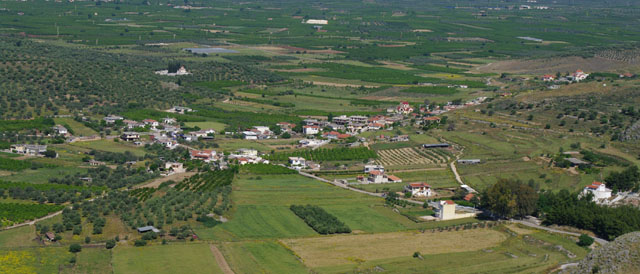 |
||
| Panoramic View of Dendra |
||
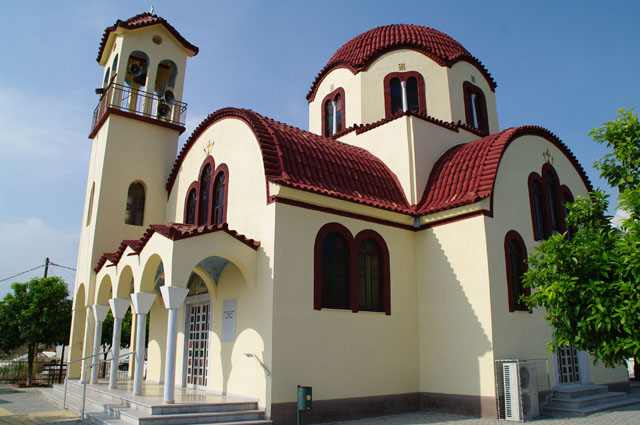 |
||
| Church of St. John |
||
|
Not only is the amazing view a reason to visit the village Dendra but also the Mycenaean Cemetery. The excavations, which began in 1926 by the Swedish archaeologist Axel W. Persson and continued until 1977, revealed a vaulted, sixteen chambered tombs and a number of important discoveries, such as "Armor of Dendra." More archaeological sites of Dendra can be found in the "Archaeological Sites - Points of Interest." |
||
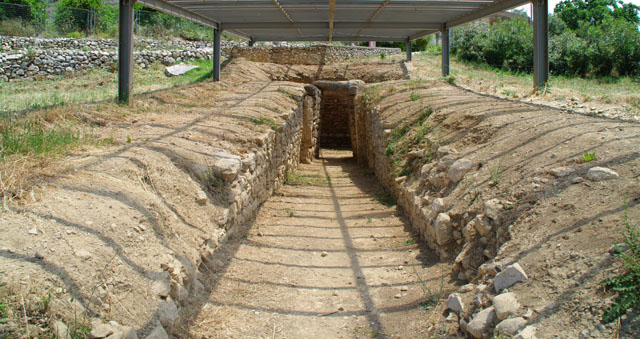 |
||
| The Vaulted Tomb of Dendra | ||
St. John - Central Church of Dendra (Lat: 37.6562117299947, Long: 22.826977372140277) |
||



